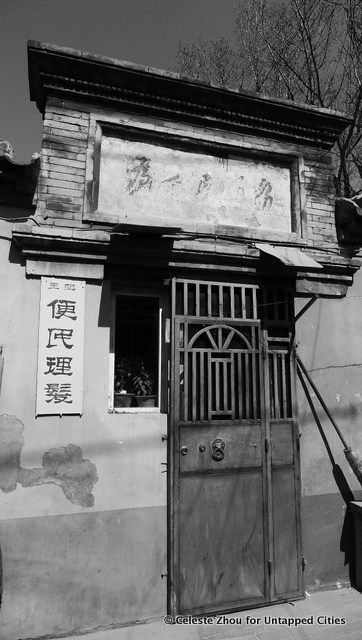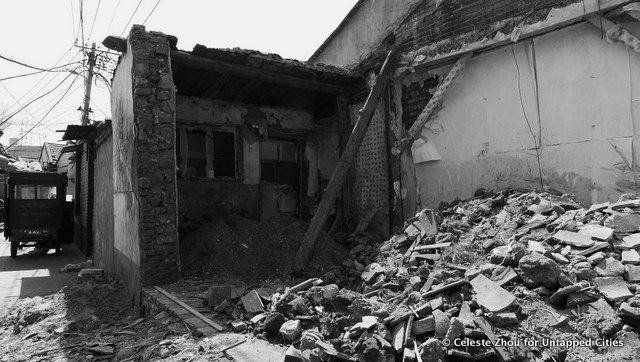NYC’s Forgotten ‘War on Christmas Trees’
Discover how an obscure holiday crackdown affects festive street vendors today!


People at a hutong in Beijing.
Although Beijing is making incredibly fast forays into modernization, the true heartbeat of this ancient city still resides in its hutongs, which are today hidden behind glittering skyscrapers and busy shopping malls. Hutongs are the narrow alleys that have linked people in the city for centuries, and today they preserve the traditional lifestyle characteristic of Beijing, as well as the nostalgic memories of generations.

Little eateries and groceries in Beijing’s hutongs.

An old hair salon. The sign on the top of the door says: “To Serve the People”, a popular motto in Mao’s time.
Beijing’s hutongs date back to the Yuan Dynasty (1271-1368) and have since spread across much of central Beijing, connecting people’s walled courtyard homes, which are called siheyuan in Chinese. Contrary to the relatively isolated siheyuan, the limited yet intimate open space that these alleys provide play a crucial role in the social life of the residents.
Be it to gossip about couples that have recently moved in to the area, or even to play chess under the poplar trees until sunset, the hutongs provide an open space where an appreciative distance between families is still maintained. Hutongs therefore allow for the development of connections and shared experiences that everyone in a community will enjoy and cherish.

A vendor on his motorycle, carrying his wares like brooms, cleaning utensils, etc.
While they are huge in number, hutongs are just as diverse in their form. While the longest one, Dongjiaominxiang Hutong, extends to four miles, Yichi Street (lichi literally translates to one inch) is the shortest at merely eighty-four feet. The narrowest hutong is Qianshi Hutong, and its narrowest section is only sixteen inches wide, thanks to the excessive expansion of the adjacent buildings. The hutong with the longest history is called Zhuanta Hutong, which can be traced back to the Liao Dynasty (907–1125).

A stone pier in front of the gate of a siheyuan. It is both structurally supportive and visually decorative.

Decorative elements on the top of a roof. These usually depict animals from ancient Chinese mythologies.
It is interesting to note that a lot of thought has gone into the naming of a hutong as well. While many hutongs are named after people, location or direction, some derive their name from plants, markets or even the shape of the hutong. Some others feature Chinese slang, words and wishes—needless to say, the name of the hutong itself can give us a peek into the Beijing of yore.

This hutong features a building that has a more western style of architecture, symbolizing the cultural and economical communication between the East and the West.
Unfortunately, rapid development of new roads and buildings has witnessed the dramatic drop of the number of hutongs in recent years, from approximately 3,000 in 1949 to only 1500 in 2003. Though people are trying to protect this cultural symbol through tourism and by the designation of protected areas, the conflict between the rush of the future and the history of the past is still difficult to reconcile. The preservation of these time capsules without hurting the process of modernization remains a serious issue for Beijing, and other developing cities of the world.
 A demolished siheyuan in Beijing.
A demolished siheyuan in Beijing.
Subscribe to our newsletter